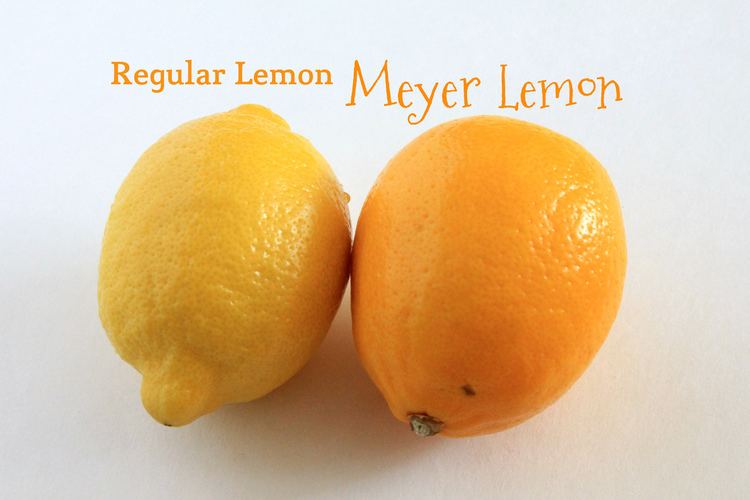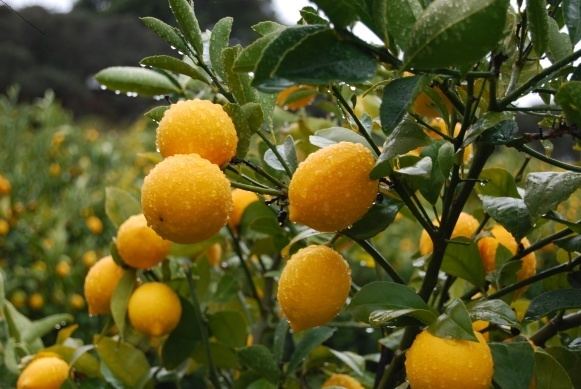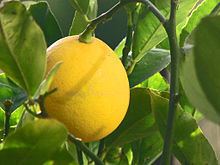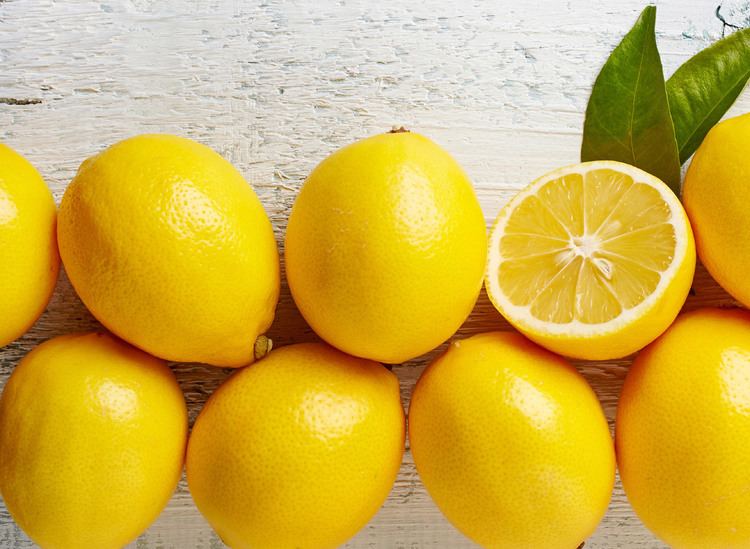Rank Species | Genus Citrus Higher classification Citrus | |
Similar Fruit, Water, Blood orange, Fruit curd, Kumquat | ||
Meyer lemon workshop excerpt
Citrus × meyeri, the Meyer lemon, is a citrus fruit native to China thought to be a cross between a true lemon and either a mandarin or common orange.
Contents
- Meyer lemon workshop excerpt
- Citrus x meyeri meyer lemon
- Description
- Cultivation
- Improved Meyer
- References
It was introduced to the United States in 1908 as S.P.I. #23028 by the agricultural explorer Frank Nicholas Meyer, an employee of the United States Department of Agriculture who collected a sample of the plant on a trip to China.

The Meyer lemon is commonly grown in China in garden pots as an ornamental tree. It became popular as a food item in the United States after being rediscovered by chefs such as Alice Waters at Chez Panisse during the California Cuisine revolution at the end of the 1990s. Popularity further climbed when Martha Stewart began featuring them in her recipes.

Citrus x meyeri meyer lemon
Description

Citrus × meyeri trees are around 6 to 10 ft (2 to 3 m) tall at maturity, though they can be pruned smaller. Their leaves are dark green and shiny. The flowers are white with a purple base and fragrant.

The Meyer lemon fruit is yellow and rounder than a true lemon. The skin is fragrant and thin, coloured a deep yellow with a slight orange tint when ripe. Meyer lemon fruits have a sweeter, less acidic flavor than the more common Lisbon or Eureka supermarket lemon varieties. The pulp is a dark yellow and contains up to 10 seeds per fruit.
Cultivation

Citrus × meyeri is reasonably hardy and grows well in warm climates. They are also fairly vigorous; a tree grown from seed usually begins fruiting in four years yielding thousands of lemons. While trees produce fruit throughout the year, the majority of the crop is harvest-ready in winter. Trees require adequate water, but less in the winter. For maximum yield, they should be fertilized during growing periods.
Meyer lemons are popular as ornamental plants due to their compact size, hardiness and productivity. They are decorative and suitable for container growing.
Improved Meyer
By the mid-1940s, the Meyer lemon had become widely grown in California. However, at that time it was discovered that a majority of the Meyer lemon trees being cloned were symptomless carriers of the Citrus tristeza virus, a virus which had killed millions of citrus trees all over the world and rendered other millions useless for production. After this finding, most of the Meyer lemon trees in the United States were destroyed to save other citrus trees.
A virus-free selection was found in the 1950s by Don Dillon of the California company Four Winds Growers, and was later certified and released in 1975 by the University of California as the 'Improved Meyer lemon' — Citrus × meyeri 'Improved'.
